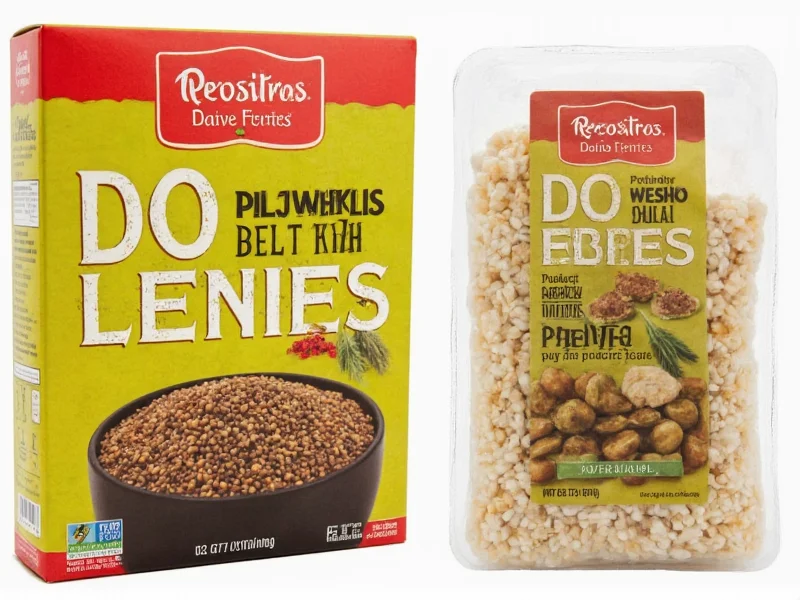Understanding lentil shelf life is essential for maintaining pantry efficiency and food safety. Unlike perishable items, dried legumes like lentils have remarkable longevity when stored properly. This comprehensive guide explores everything you need to know about lentil expiration, storage best practices, and how to maximize both safety and nutritional value.
Understanding Lentil Shelf Life
Lentils are among the most shelf-stable pantry staples available. The "expiration" date on lentil packaging typically indicates peak quality rather than safety. Most manufacturers print a "best by" date that's 2-3 years from production, but this doesn't mean lentils become unsafe immediately after this date.
Dried lentils contain minimal moisture (usually under 12%), creating an environment where bacteria and mold cannot thrive. This natural preservation method allows them to remain safe for consumption far beyond printed dates when stored properly. The primary concern with older lentils is gradual quality degradation rather than safety risks.
| Storage Method | Optimal Freshness | Maximum Safe Duration |
|---|---|---|
| Original packaging, unopened | 1-2 years past date | 2-3 years past date |
| Airtight container at room temperature | 2 years | 3+ years |
| Refrigerated in airtight container | 2.5 years | 4 years |
| Freezer in airtight container | 3 years | 5+ years |
| Cooked lentils in refrigerator | 3-5 days | 7 days |
Proper Lentil Storage Methods for Maximum Freshness
The best way to store lentils long term involves controlling three critical factors: moisture, temperature, and pests. Exposure to any of these elements significantly reduces shelf life. For optimal preservation:
- Transfer lentils from flimsy packaging to airtight containers made of glass, metal, or thick plastic
- Store in a cool, dark pantry location away from heat sources and direct sunlight
- Maintain consistent temperatures below 70°F (21°C) for best results
- Consider adding oxygen absorbers to containers for long-term storage beyond two years
- Never store near strong-smelling foods as lentils can absorb odors
For those practicing bulk food storage, vacuum-sealing lentils with oxygen absorbers extends their peak quality period significantly. This method prevents both moisture absorption and insect infestation, the two most common causes of lentil spoilage.
Signs Your Lentils Have Gone Bad
While properly stored dried lentils rarely become unsafe, they can deteriorate in quality. Watch for these signs that indicate your lentils should be discarded:
- Visible mold or moisture: Any fuzzy growth or damp spots means immediate disposal
- Unpleasant odor: Rancid, sour, or otherwise off smells indicate spoilage
- Texture changes: Excessive hardness or crumbling beyond normal dryness
- Color fading: Significant lightening or darkening from original color
- Pest evidence: Webbing, holes in packaging, or actual insects present
- Off taste: Bitter or sour flavor after cooking (always test a small batch first)
It's important to note that minor color variations in dried lentils are normal and don't indicate spoilage. Lentils naturally come in various colors including green, brown, red, and black, and these colors may fade slightly over time without affecting safety.
Safety Considerations with Long-Term Lentil Storage
Many home cooks wonder: can you eat expired lentils without risk? The answer depends on storage conditions and visible signs of spoilage. Dried lentils stored properly pose minimal food safety risks even well past printed dates.
The primary safety concern with older lentils isn't bacterial contamination but potential mycotoxin development from mold in humid conditions. Properly stored lentils in dry environments won't develop these toxins. If your lentils show no signs of moisture, mold, or pests, they're generally safe to consume regardless of the printed date.
Older lentils may require longer cooking times as they become more resistant to hydration over time. Soaking overnight can help reduce cooking time for lentils stored beyond two years. While nutritional value gradually decreases, significant protein and fiber content remains even in older lentils.
Maximizing Nutritional Value Over Time
Though lentils remain safe for years, their nutritional profile does change gradually. The most significant losses occur in water-soluble vitamins like folate and certain B vitamins. Protein, fiber, and mineral content remain relatively stable over time.
To maximize nutritional benefits from older lentils:
- Soak lentils before cooking to improve digestibility and nutrient absorption
- Cook with vitamin C-rich foods to enhance iron absorption
- Pair with grains to create complete protein profiles
- Avoid discarding cooking liquid, which contains water-soluble nutrients
For those concerned about lentil shelf life in pantry conditions, monitoring humidity levels proves crucial. In regions with high humidity, consider adding food-safe desiccants to storage containers to prevent moisture absorption that accelerates quality degradation.
Practical Usage Tips for Older Lentils
Lentils stored beyond their peak freshness period still have valuable culinary applications. While they may take longer to cook and have slightly less vibrant color, they remain nutritionally beneficial and flavorful.
For lentils approaching or exceeding three years of storage:
- Soak for 12-24 hours before cooking to reduce cooking time
- Add acidic ingredients like tomatoes later in cooking to prevent toughening
- Use in soups and stews where texture matters less than in salads
- Consider pureeing older lentils for dips or spreads
- Test a small batch before committing an entire recipe
Understanding how long do dried lentils last helps reduce food waste while maintaining kitchen efficiency. By recognizing that "expired" often means "past peak quality" rather than "unsafe," you can make informed decisions about using your pantry staples.











 浙公网安备
33010002000092号
浙公网安备
33010002000092号 浙B2-20120091-4
浙B2-20120091-4